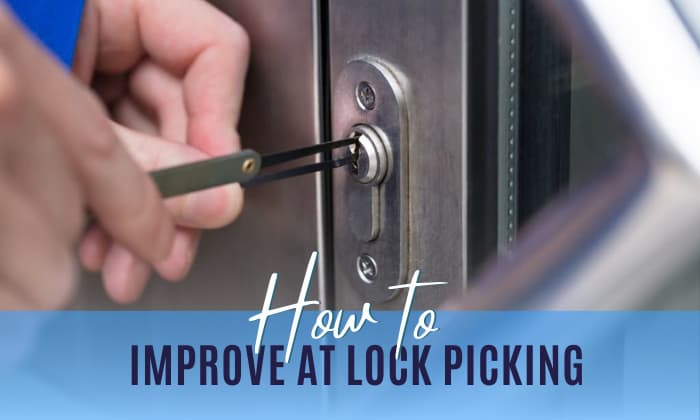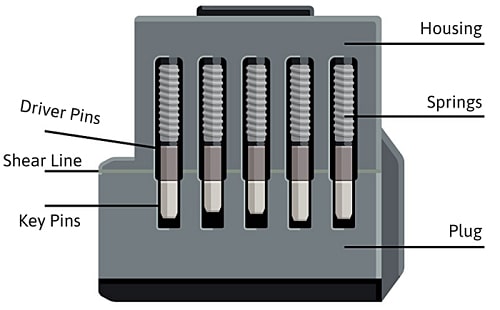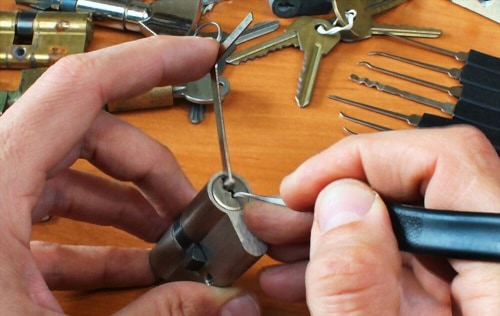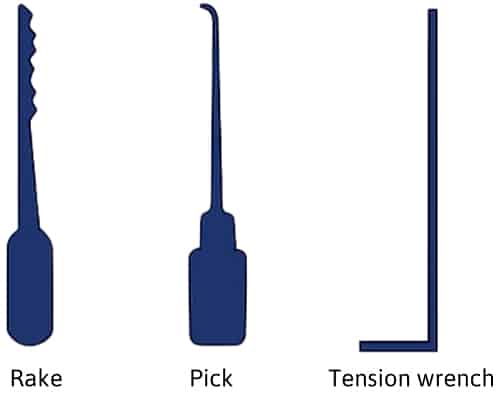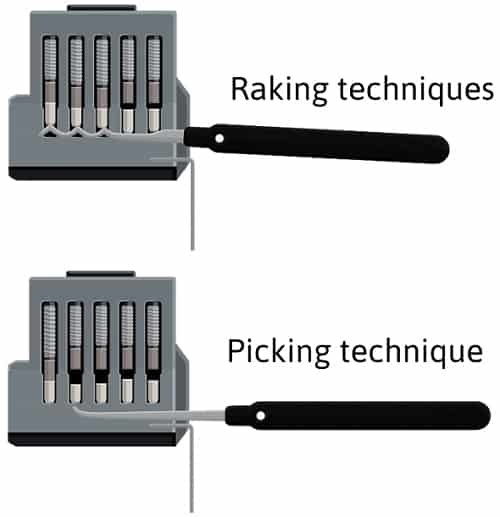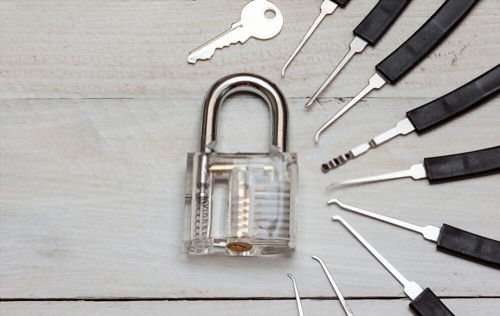The notion that only criminals and burglars can pick a lock has been long gone. Many hobbyists practice lockpicking as it is cheap and handy in different hairy situations.
Aside from that, you don’t know where this lockpicking skill might bring you. But one thing’s for sure: it may create an opportunity for you to enter the locksmith industry.
Whether for a professional or recreational reason, this article will serve as a lock picking guide to help you access your home or cabinets if you lose your key. Explore here different ways on how to improve at lock picking.
Table of Contents
Ways to Improve at Lock Picking
1. Tutorial or lock picking courses
There is more to the art of lockpicking than what’s shown in movies. The sense of finesse and precision are vastly erased and often overlooked in these media.
Lock pickers must have a deep understanding of the various locking mechanisms they are working with, the needed tools for that specific lock, and the best technique to manipulate the mechanism without damaging it.
And to pick up those basic principles in lockpicking, you must religiously expose yourself to lock pick videos and other tutorials.
I recommend downloading Mike Gibson lock picking detail overkill for a profound overview of the craft.
Lockpicking Basics for You to Master
Lock picking is not simply inserting a hook and jiggling it inside the keyhole. There is a whole lot more to it than that.
Here are the basic aspects that pickers should master in lockpicking training.
- Parts of lock mechanism
Of course, to have a command of the lock, you need to know everything about it first. That’s why understanding parts such as the pins or springs and the security mechanism is one of the most important lock picking tips to save yourself from hassle.
- Tensioning
Tensioning is instrumental in keeping the pins “set” on the shear line, preventing them from blocking the plug from rotating.
All lock pickers must know how vital tensioning is in this craft. The outcome of your lockpicking mainly relies on how well you perform in this aspect.
In general, cheap locks require heavy tension (enough to leave a dent on your finger), while expensive ones with serrated pins respond better to light tension. Moderate force, meanwhile, are used most often, usually with spool pins or mid-price locks.
That said, for beginners, flexing the tension tool forcefully can be a way of receiving pins feedback and turning the plug. This is an ideal way of tensioning because it is easier to feel the pins.
But the thing is, heavy tensioning could also bring you several issues in the process: (1) it may break your tension wrench, and (2) it makes the pins hard to lift because they are stuck.
So, when learning how to pick a lock, it is crucial to play around with the level of tension while considering the lock reaction.
- Resistance and order of picking
Feeling the feedback of the pins and knowing the right order of pins to pick are lock picking techniques that every picker should master.
These two aspects come hand-in-hand. To know the order of picking, the picker must be able to connect with the pins. If a certain pin in the stack resists and does not seem springy, that is the pin to pick.
Once it was set into the shear line, find the next resisting pin to pick.
- Picking and raking techniques
These two techniques are ideal lock picking for dummies or starters.
Simply put, raking is easier than single-pin picking as this method gives quick results. We try to set multiple pins at once by raking them using the tool.
On the other hand, single-pin picking (SPP) requires the lock picker to have a deeper understanding of other elements like binding, tensioning, and resistance.
In SPP, lock pickers lift the stacked pins individually, following their resistance. It is more accurate as it allows you to interpret the feedback from the pins you’re working with.
2. Invest in lockpicking kits.
Although lockpicking is considered a cheap hobby, that does not mean lockpickers would not spend any dime on it. To progress and improve your skill, you need to invest in the right set of lock picking kit.
And although economical, practicing with paperclip and bobby pins would not bring you to the depth of the craft. They are not durable and sometimes are the reason for failed attempts.
- Essential lock-picking tools.
Some lock-picking enthusiasts might be overwhelmed by the amount of tools available on the market, which might cause them to lose interest in this craft.
But truth be told, even seasoned lock pickers do not use that many tools despite having dozens in their arsenal. Typically, their picks mainly revolve around these options:
-
- Lock picking hooks
- Rake
- Tension wrench
- Training locks
3. Be a realist!
There are tons of pin-tumbler or wafer locks available in the market. Some have the usual 4-pin or 5-pin setups; others may have 7 or 10 pins.
Expensive locks even have added features to increase the level of complexity and deter pickers.
Hence, you cannot open every lock with standard lock-picking tools like tension wrenches, hooks, or rakes.
Or if you can, it will take more patience and finesse, as these locks will give you a false set. An example is when you pick a security lock with spool pins.
That is why you need to understand that lock picking is a continual learning process, and it is not instantaneous like shown in movies. Lucky for you, there are many u tube lock picking tutorials to help you hone your skill.
FAQs
Is it hard to learn lock picking?
Entering the world of this craft and learning the basics is pretty simple. But as I have said, it does not stop there.
The complexity will occur once you dive deeper into the art of lockpicking.
Is lock picking a skill?
Yes, lockpicking is a skill. It requires learners’ finesse and precision to pick a lock without damaging it. That’s why not everyone can be a locksmith.
How to tell when pin is set?
You can tell if the pin is set through its given feedback. If it clicks and feels floppy with no spring pressure, you can move on to picking the next pin.
If it did not rattle, it is a false set, and you need to keep working on it.
Conclusion
I hope this article on how to improve at lock picking helps you further explore this craft.
Although often associated with malicious intent, lockpicking is an easy, relatively cheap pursuit for leisure and pastime. Aside from that, it opens diverse opportunities for hobbyists.

I am the last member to join Revolar and might be just the luckiest to work with dedicated people like Teddy and John. Our team has established a process where my only job is writing the best content to deliver incredible ideas and guides.


